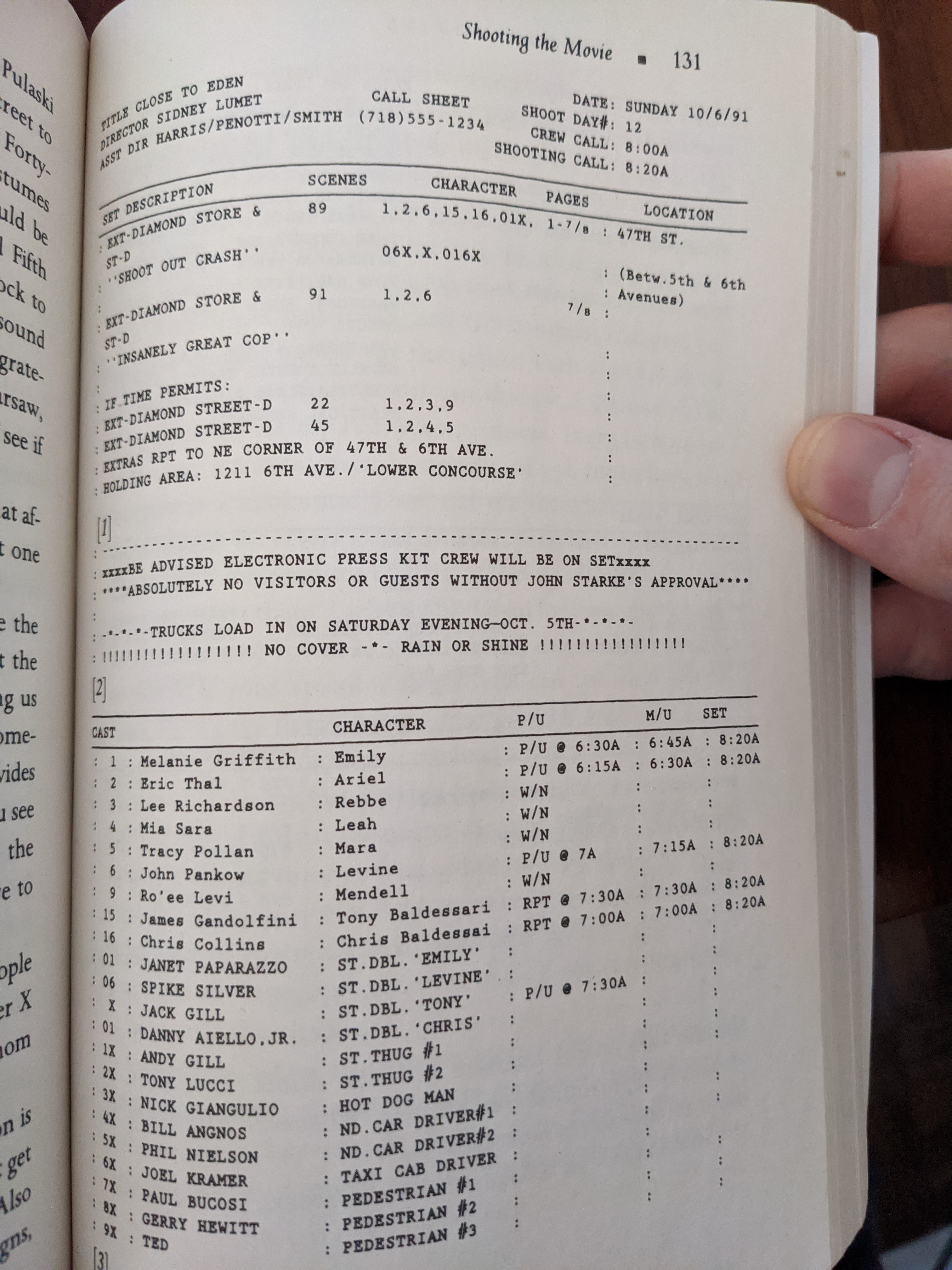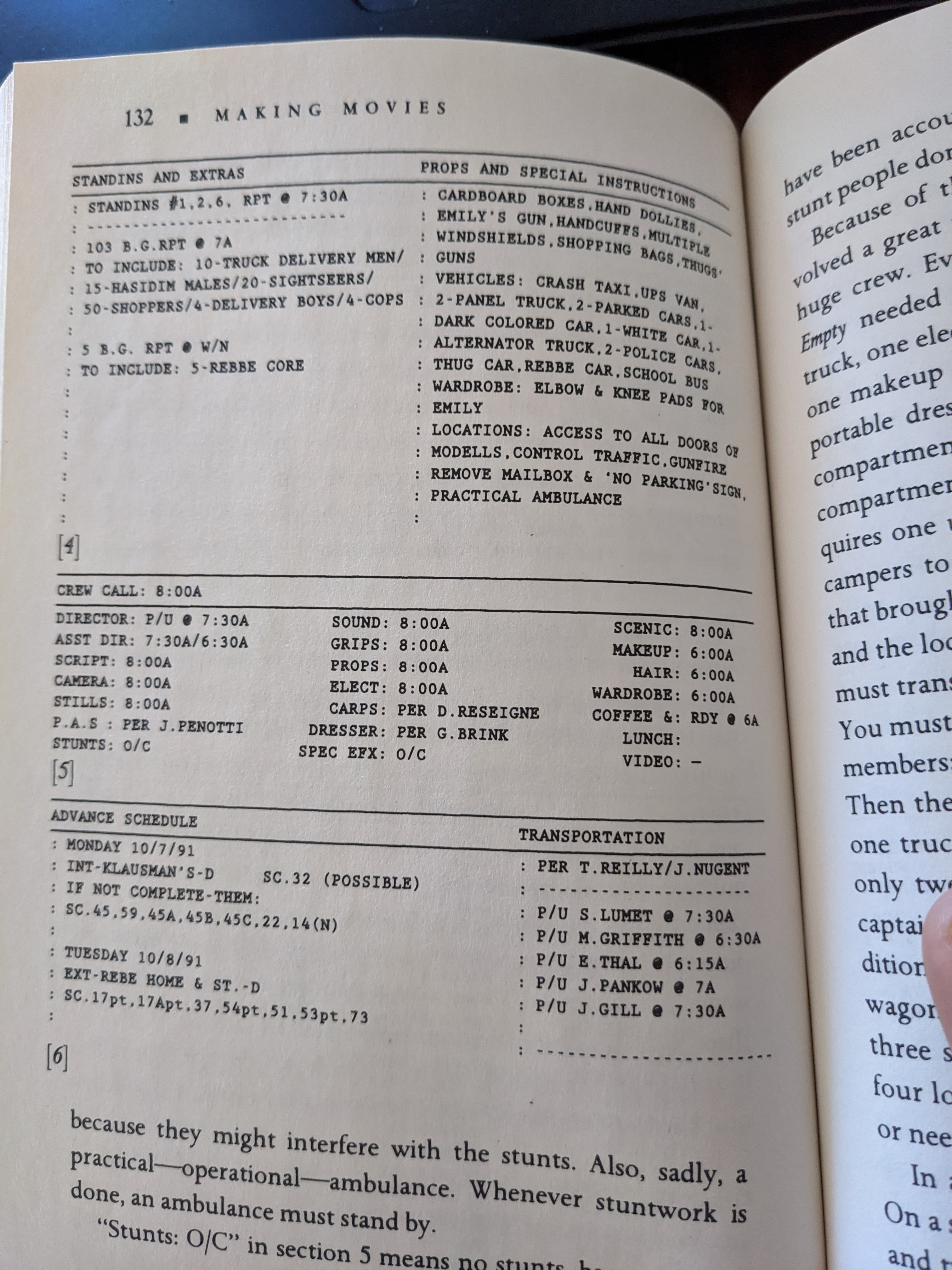Making Movies
Making Movies, by Sidney Lumet
Picasso once noted that when art critics get together they talk about Form and Structure and Meaning. When artists get together they talk about where you can buy cheap turpentine.
This book is about turpentine, and about how to use turpentine to make Form and Structure and Meaning. It is full of beautiful, funny little anecdotes from Lumet’s dozens of films, most not so well-known. Lumet comes across as practical, dedicated, kind and wise. The chapters are organized thematically: The Script, Actors, Music, etc.
By far the most interesting chapter was The Camera. Lumet makes simple physical tweaks that completely change what an audience gets from the movie. Angle, lens choice, light and color: not just in each shot but telling a story across the scenes and with different characters.
I also loved seeing the call sheets and his detailed breakdowns of them.

Call sheet for Close to Eden, Side 1

Call sheet for Close to Eden, Side 2
Movies are the most complicated, multi-authored works of art our civilization produces. Beyond the vision, there is a great deal of craft and an obsessive focus over months, with limited room for mistakes. It’s not glamorous, but we are left with the sense that it is work worth doing well.
This is one of the great management books I’ve ever read. A director is the manager of a small company, assembled hastily to operate over a short time period1. He must take all these experienced professionals, each with their own goals, and align them behind his own vision. The highest compliment you can pay on the set, he claims, is to say “We’re all making the same movie”. In other words, we’re all working towards the same goals.
-
What would it look like if we built software on the film model? Assemble a team for a fixed time period, sprint to delivery. ↩
Comments (0)
To leave a comment on this post, send me an email.
Revision History
(About)